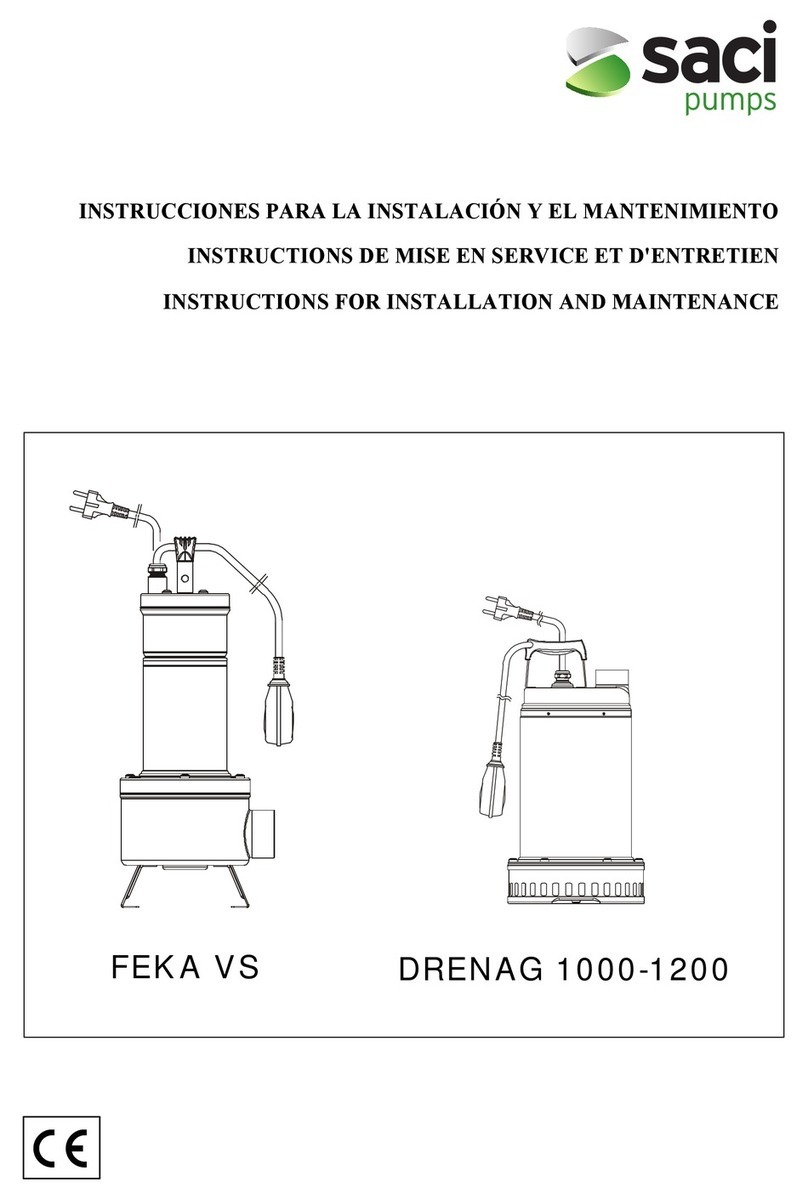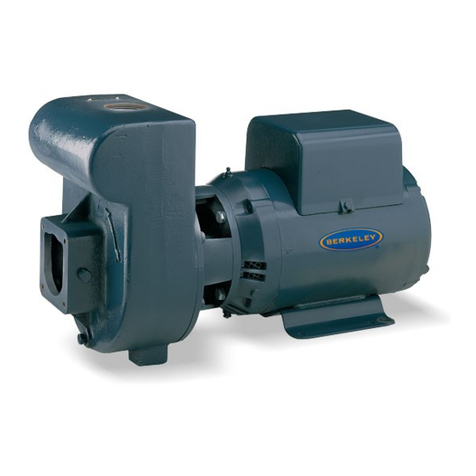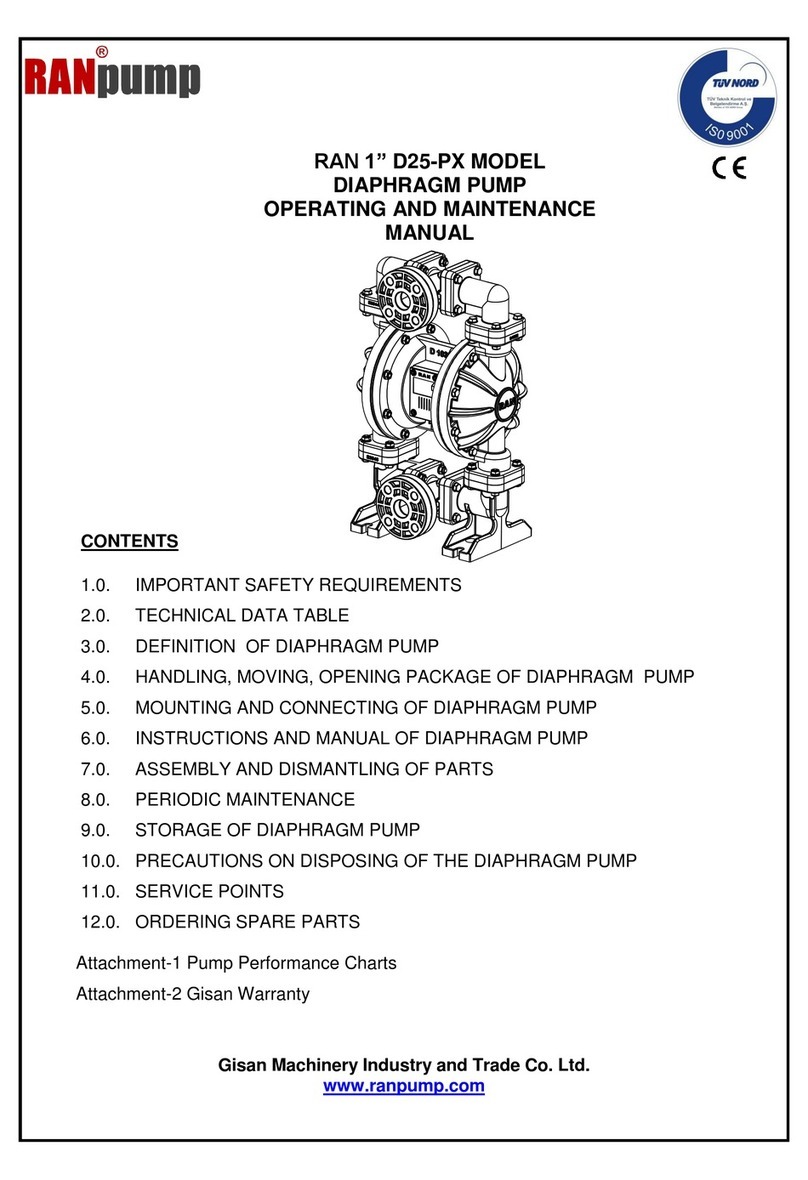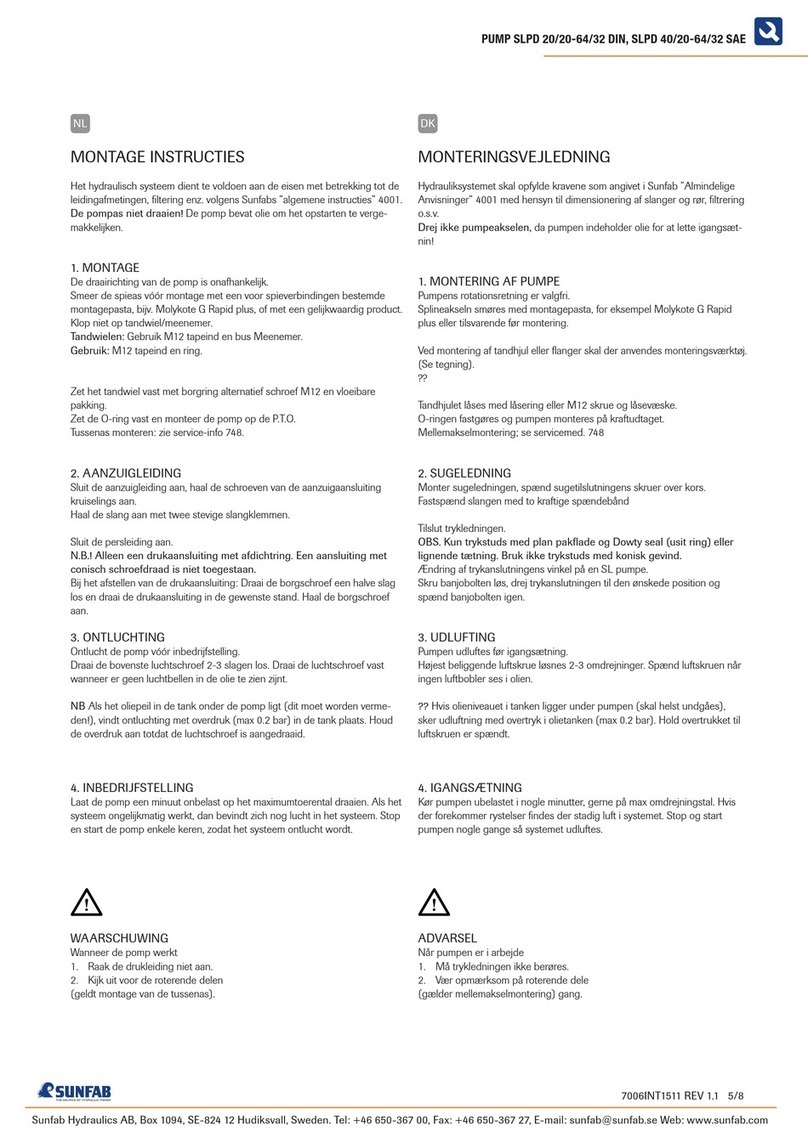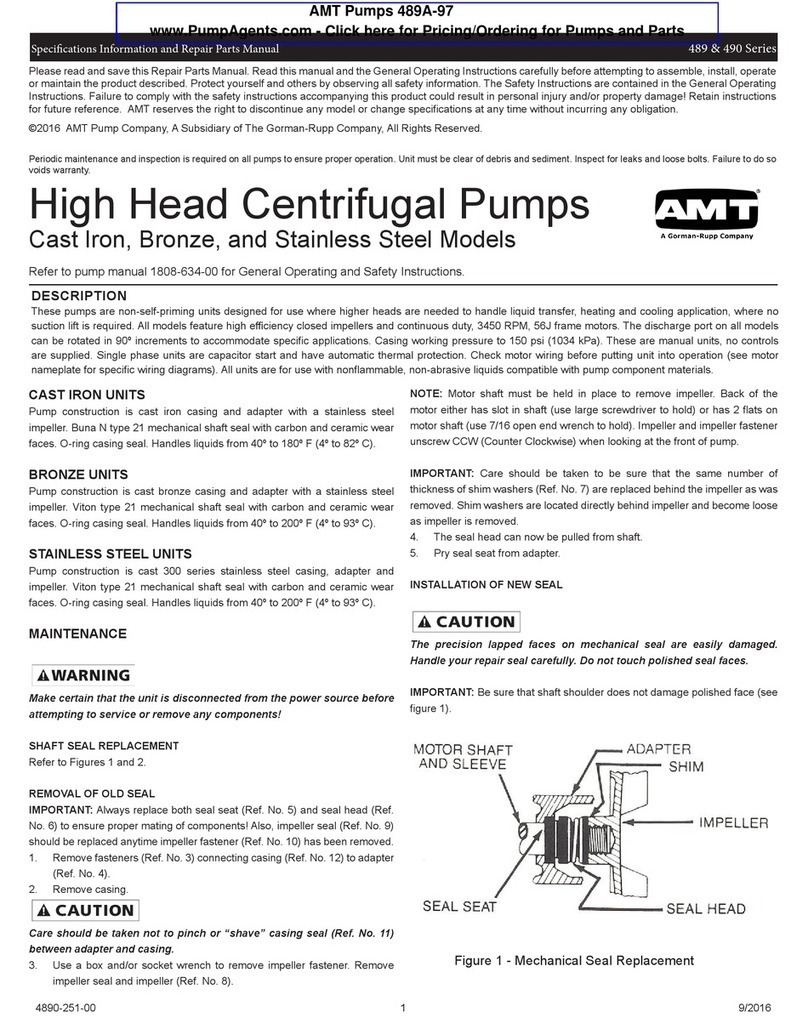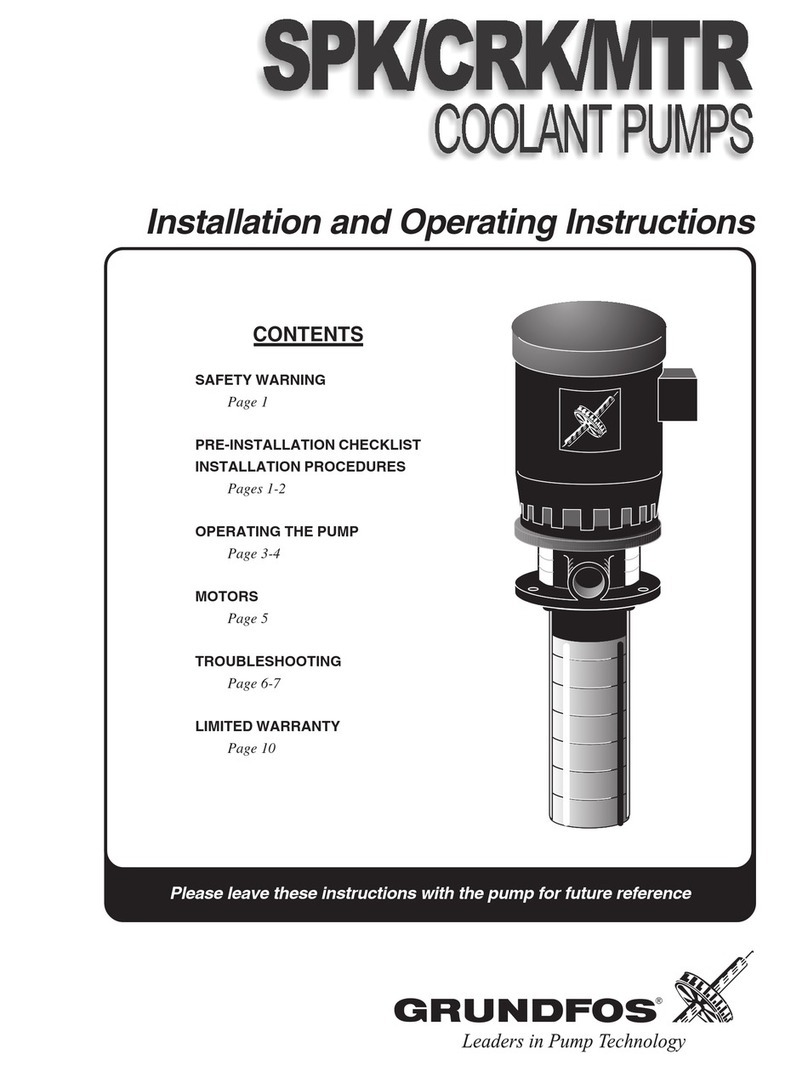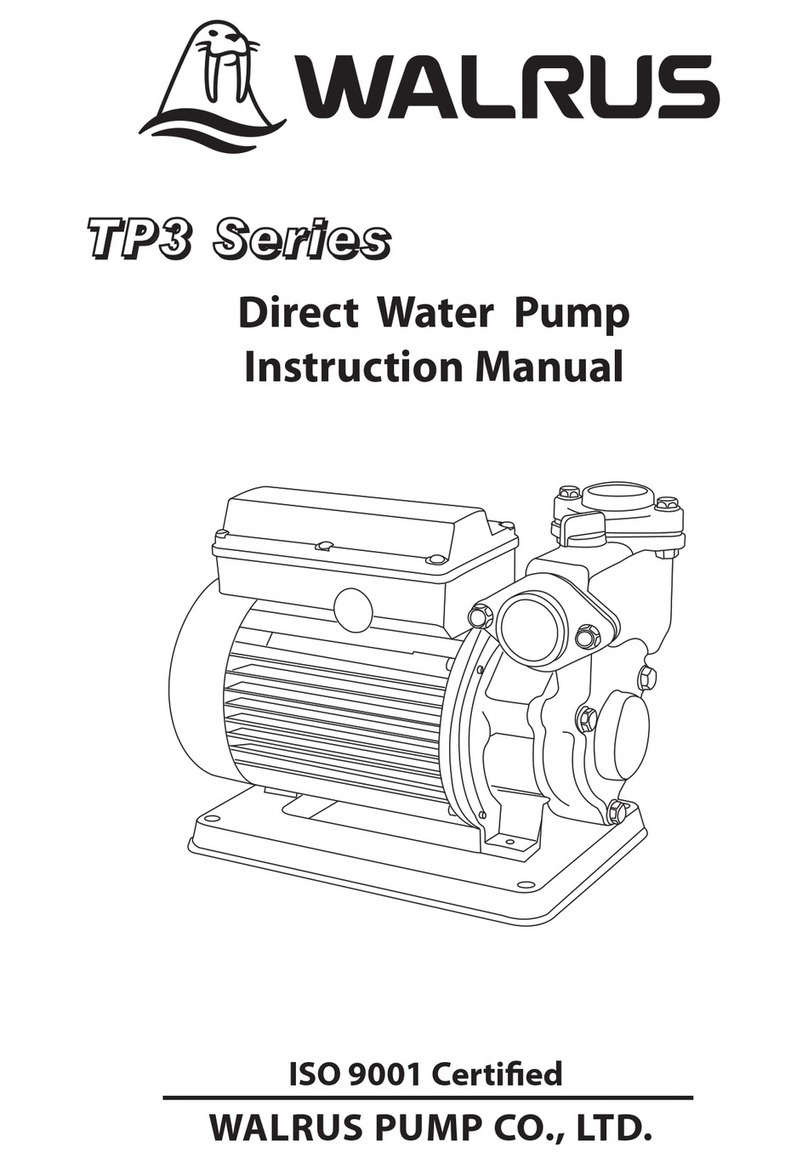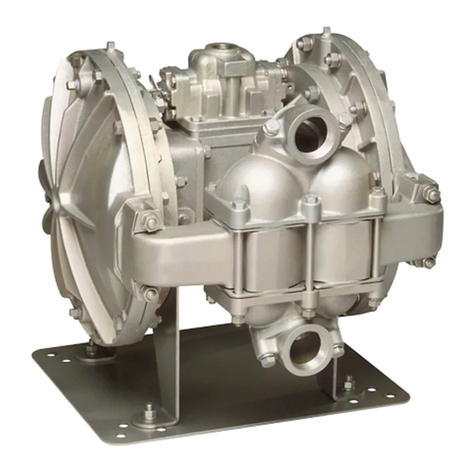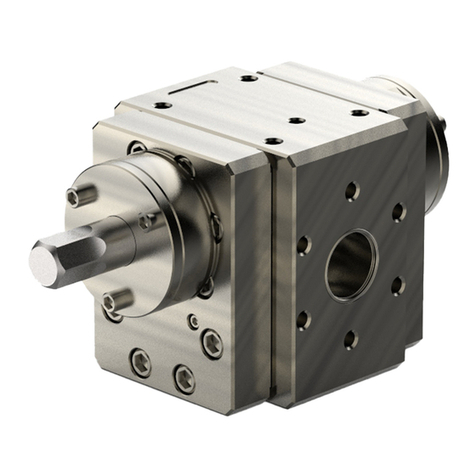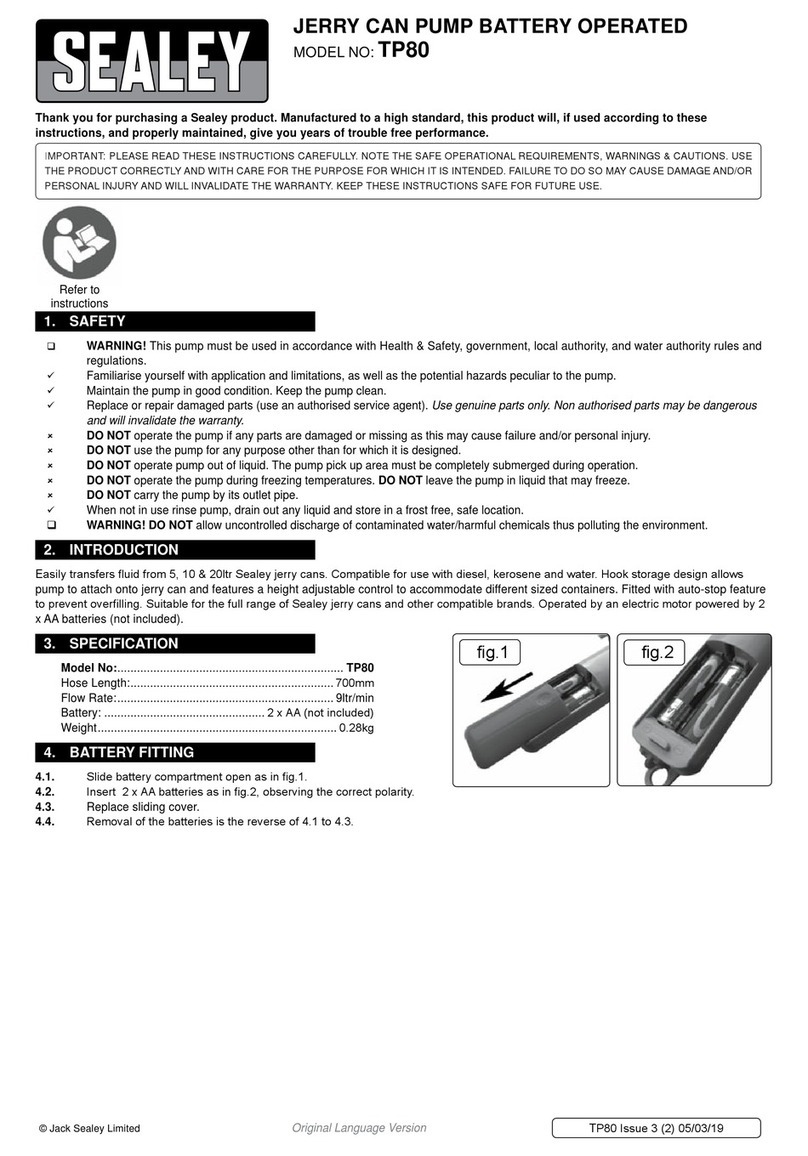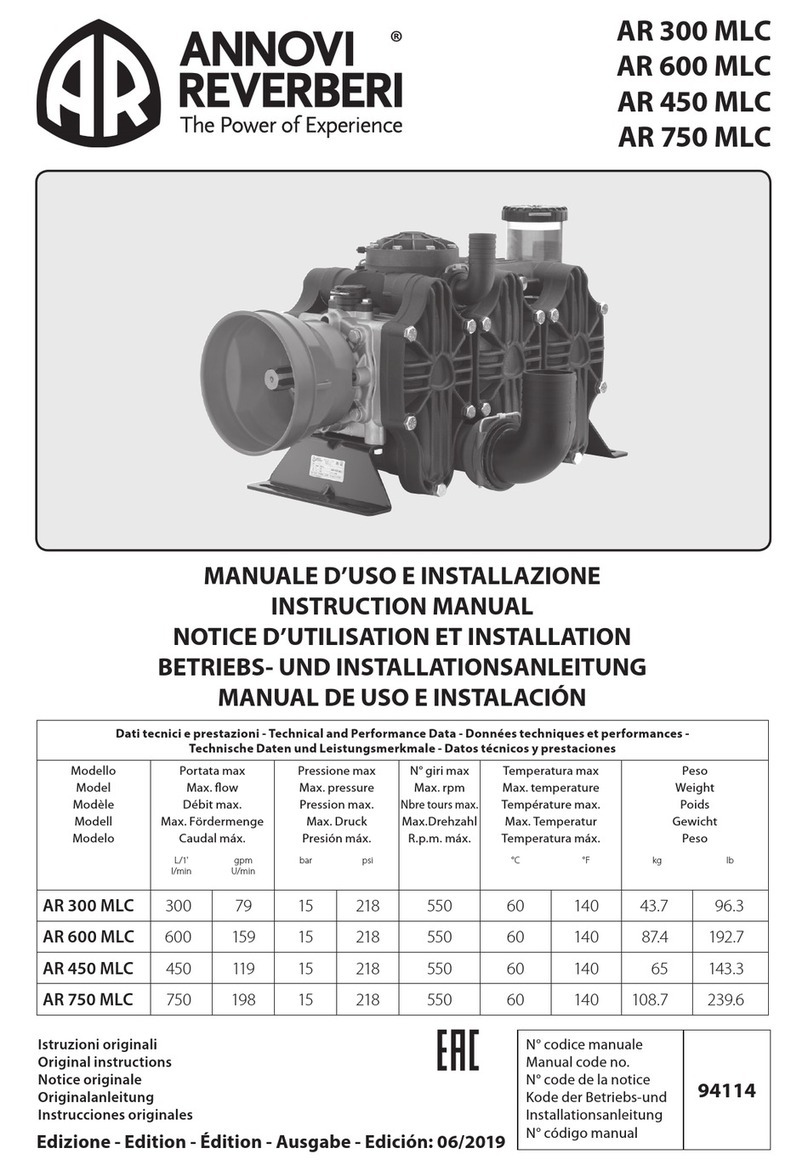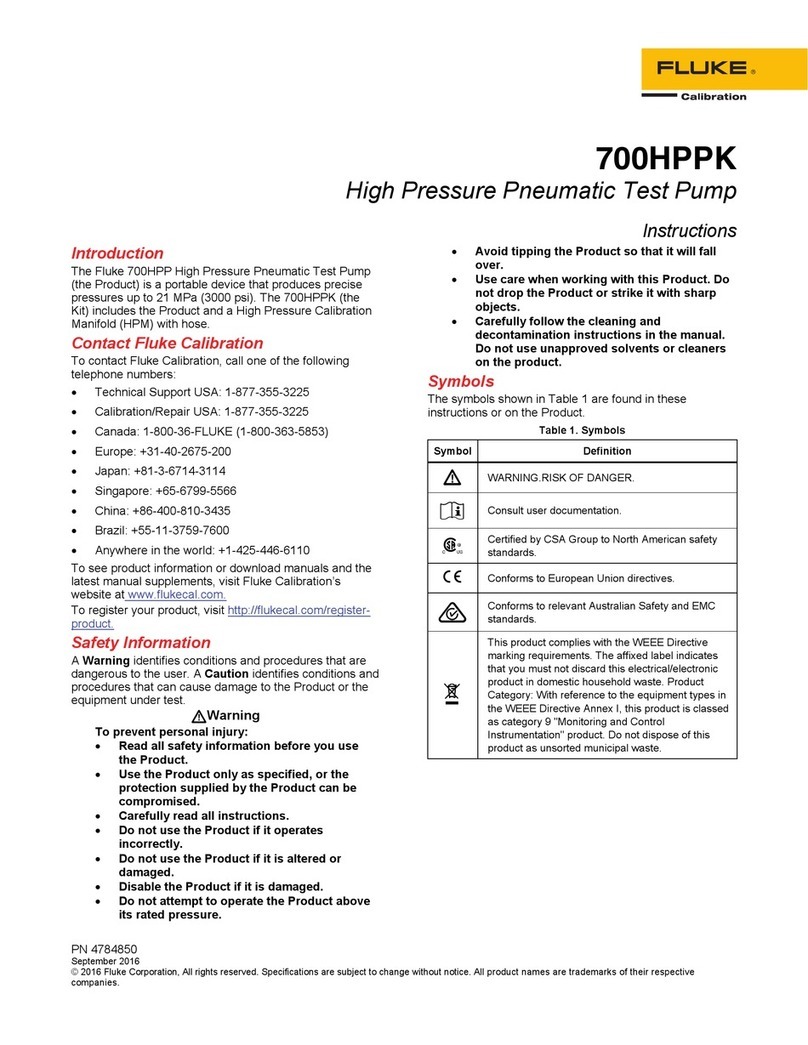6
Care During
Operation
(cont.)
efficiency. Lack of sufficient fluid is called
starvation or cavitation. This can be
remedied by increasing the inlet pressure
or reducing pump speed.
Pumping thin fluids requires a different
approach. Since the pump depends upon
the metered fluid for lubrication of internal
bearing surfaces, speeds are normally
limited. These bearing surfaces include the
bearing areas in the front and rear plates.
Operating a Zenith pump above indicated
speeds will accelerate wear and may cause
seizure, especially if the fluid is a poor
lubricant at operating temperatures. It is not
recommended to pump abrasive fluids with
C-9000 pump models. In certain applica-
tions, it is recommended to use a pump of
larger capacity operated at a lower
speed. Contact your representative or our
Applications Engineering Department for
assistance with this special case.
Inlet Pressure Requirement
Once the pump is installed the inlet
port pressure must be found and adjusted
to an acceptable level. It is highly recom-
mended that the inlet port pressure be at
least one atmosphere. It is, however,
acceptable to have 0.5 atmosphere or
even vacuum at the inlet assuming the
port is flooded. It is also imperative that
the pumping losses from the tank to the
inlet port be considered in this procedure.
A high viscosity fluid requires a high inlet
pressure; a low viscosity fluid requires a
low inlet pressure. Once the pump has
started cavitation will occur if the inlet
pressure is not high enough. Cavitation
may damage the pump so if it occurs
stop the pump immediately. Keep in mind
that once the inlet is flooded and the
pump is started there will be a head loss
across the inlet port of the pump. Table 1
on the next page has been included for
reference.
De-rating the Pump Performance
Pump displacement depends on four
basic variables: fluid viscosity, gear clear-
ances, differential pressure and pump
speed. The pump performance is
de-rated, or reduced from the ideal value,
due to slip of the product fluid around the
gears from the discharge side back to
the intake side.
The less viscous the fluid, the more
likely it is to flow through a given orifice.
For de-rating the pump, this orifice is the
gear clearance. Differential pressure
forces the fluid through this clearance at
a steady rate, regardless of the pump
speed. Thus, the slip flow is constant for
a given amount of time. The actual delivery
of fluid is the measured delivery minus the
slip. This means the pump displacement
is still linear. If we increase the pump
speed we increase the measured deliv-
ery, while the slip remains constant. Slip
flow is repeatable and predictable, and
pump operation can be adjusted to
compensate for this flow.
Graph 1 on the next page has been
included for reference.
Operating at elevated temperatures
Zenith C-9000 Series pumps are
designed for operating temperatures less
than 176°C. When operating at tempera-
tures above ambient, heaters should be
used, and pumps should be heated slowly
and uniformly to avoid distortion and
internal component interference.
Magnetic Coupling Pumps
In normal operation, the magnetic
poles of the outer drive magnet remain
aligned with the magnetic poles of the
inner pump magnet. The motion of the
motor is smoothly transferred to the pump
shaft. If the torque load on the pump
exceeds the magnetic coupling strength,
then the outer magnets will rotate past
the inner magnets and the magnetic poles
will misalign. The outer magnet will
increase to a no-load motor speed while
the inner magnet remains relatively motion-
less. Excessive noise and vibration can
be observed as the poles of a decoupled
magnet move past one another.
The pump should be stopped
immediately if the magnets decouple.
Continued operation of the motor with the
magnets decoupled will reduce the future
strength of the coupling. The magnets will
not properly realign until the motor has
been stopped. Before restarting the
motor, one should determine the cause of
the decoupling and remedy the problem.
Decoupling does not necessarily indicate
a pump failure. It indicates that an instan-
taneous torque requirement of the pump
has exceeded the strength of the mag-
netic coupling supplied with the system.
Without disassembly of the pump it
can be difficult to determine whether the
magnetic coupling or the pump internals
are operating incorrectly. The following is
a list of examples that could result in
magnet decoupling:
• Blockage or restriction in the
discharge side of the system
















